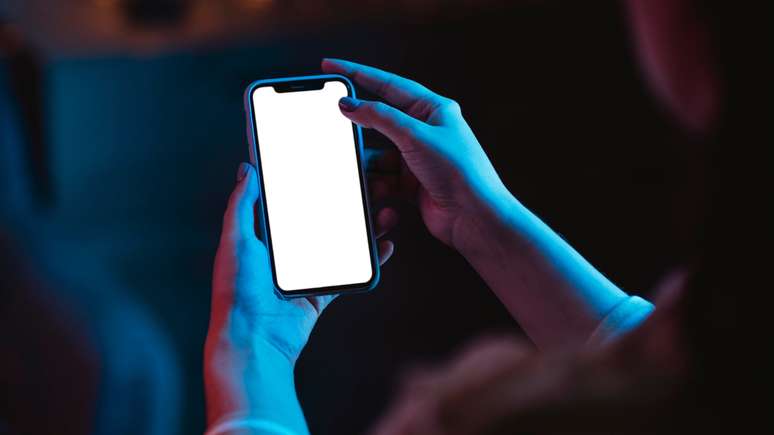In this week’s column, psychiatrist Jéssica Martani talks about the excessive use of electronic devices and its – serious – consequences
Are you one of those who just woke up and are already browsing social media? Or are you the type who eats lunch while looking at his cell phone? Do you have trouble sleeping because you were surfing the internet and when you saw it it was after midnight?
html[data-range=”xlarge”] figure image img.img-018a3cd1dc35dd6e7d8919f7b99aa9cfyjq45kxa { width: 774px; height: 435px; }HTML[data-range=”large”] figure image img.img-018a3cd1dc35dd6e7d8919f7b99aa9cfyjq45kxa { width: 548px; height: 308px; }HTML[data-range=”small”] image figure img.img-018a3cd1dc35dd6e7d8919f7b99aa9cfyjq45kxa, html[data-range=”medium”] figure image img.img-018a3cd1dc35dd6e7d8919f7b99aa9cfyjq45kxa { width: 564px; height: 317px; }
How many times have we felt exhausted, as if our energy had been drained, and precisely because of the electronic device? Therefore, we “scan” our day and observe that nothing has been done beyond the daily routine. So why this heavy feeling of tiredness?
What is Digital Burnout?
Digital burnout, also known as digital burnout, is a term used to describe the physical wear and tear and damage to mental health caused by excessive use of technology, such as cell phones, computers, social networking and other digital platforms, both for life personal and for the corporate world.
People suffering from digital burnout can experience symptoms such as feeling exhausted, body aches, headaches, insomnia and night terrors.
Digital burnout is associated with excessive exposure to the digital environment, as well as pressure to reply to emails and messages, the urge to miss news, the need to always be ‘up to date’.
Also known as FOMO syndrome (fear of missing out), in digital burnout the person feels obliged to always be connected and, when disconnected, has the feeling that he is doing something wrong, feels overwhelmed by a flood of information. All this is associated with the anguish of not being able to “live” the real world. The person realizes that she is letting life aside, but even so she cannot disconnect and has difficulty taking time off.
Brazil, a country “addicted” to digital
According to the report made by Digital In 2019, Brazilians spend on average about 3h30 a day connected to social networks. And in this same ranking we win a silver medal for being the second country in the world that spends the most time per day on the internet, second only to the Philippines.
According to IBGE data, in 2021, approximately 78% of the Brazilian population has access to the Internet. Brazil is the country that has one of the largest social network user bases in the world.
Everything changed abruptly after the pandemic. What was previously uncommon has become part of everyday life. Among them, I can highlight office work from home. According to a survey conducted by Microsoft, the number of weekly online meetings increased by 148% between 2020 and 2021.
In addition, courses, graduations and other virtual activities have become popular. Therefore, those free minutes are now filled with a “call” here and a doctor’s appointment there. The problem is that the more connected, the less physical connection we have to our real world, and the worse our mental health.
Digital burnout damage
• Eye strain: causes headaches, tired eyes and difficulty focusing;
• Feeling of emotional overload;
• Difficulty concentrating;
• Increased propensity for boredom outside the digital world: increases irritability and impatience;
• Since we stay at home for a long time and without exposure to natural light, as well as excessive exposure to artificial blue light from electronics at night, disturbances are created in the sleep-wake cycle;
• Sleep is one of the most affected and we now know that people with impaired sleep-wake cycles can alter hormones and important brain neurotransmitters. The result of this is an increase in depression and anxiety;
• We must not forget that the longer we stay indoors, the less contact we have with nature and the greater our social isolation, an important pillar for our mental health;
• Addiction: Excessive use of technology can lead to addiction, especially when people have difficulty disconnecting or experience anxiety when not using technology.
With all of this comes increased stress. I also see a significant increase in people who are no longer able to distinguish or draw boundaries between the real world and the digital one.
Tips for achieving more peace and mental health, even in the midst of technology:
• Have two mobile phones, one company and one personal. Then, when you finish your working day, turn off the other mobile by inserting automatic messages specifying until what time you will be “on duty” on the mobile. Also specify the lunch times;
• Set boundaries and leave reminders that it might take a few minutes for the person to respond and for the person to wait, okay?
• Establish specific hours to use the technology and avoid using it outside these hours. For example, you might decide not to use technology after 9:00pm;
• Completely disconnect from technology for a while. As in everyday life, you can decide not to use the technology on the weekend or on a specific day of the week;
• Create a tech-free routine: Make time for activities that don’t involve technology, such as reading a book, exercising, or taking up a hobby you enjoy;
• Avoid using technology in bed, as it can interfere with your sleep and disturb the quality of your rest;
• Use apps to track technology usage: There are apps that help you track how much time you spend using technology and which apps you use most often. This information can help you make informed decisions about limiting excessive use;
I also want to remind you that to avoid digital burnout, it’s important to set healthy limits on technology use, prioritize leisure time for activities without it, and seek professional help if symptoms persist.
Source: Terra
Ben Stock is a lifestyle journalist and author at Gossipify. He writes about topics such as health, wellness, travel, food and home decor. He provides practical advice and inspiration to improve well-being, keeps readers up to date with latest lifestyle news and trends, known for his engaging writing style, in-depth analysis and unique perspectives.





![Un Si Grand Soleil preview: Thursday, October 23, 2025 episode recap [SPOILERS] Un Si Grand Soleil preview: Thursday, October 23, 2025 episode recap [SPOILERS]](https://fr.web.img6.acsta.net/img/12/a9/12a96513d7a4f6120d33b7120427505f.jpg)


